High-Performance Compact Multi-Mode UWB Filter using High-Temperature Superconductivity
Abstract
1. Introduction
2. Analysis and Design of the UWB Filter
3. Fabrication and Measurement of UWB Filter
4. Conclusions
Author Contributions
Funding
Acknowledgments
Conflicts of Interest
References
- Zhu, L.; Sun, S.; Menzel, W. Ultra-wideband (UWB) bandpass filters using multiple-mode resonator. IEEE Microw. Wirel. Compon. Lett. 2005, 15, 796–798. [Google Scholar]
- Gao, X.; Feng, W.; Che, W. Compact ultra-wideband bandpass filter with improved upper stopband using open/shorted stubs. IEEE Microw. Wirel. Compon. Lett. 2017, 27, 123–125. [Google Scholar] [CrossRef]
- Kamma, A.; Das, R.; Bhatt, D.; Mukherjee, J. Multi mode resonators based triple band notch UWB filter. IEEE Microw. Wirel. Compon. Lett. 2017, 27, 120–122. [Google Scholar] [CrossRef]
- Kumar, S.; Gupta, R.D.; Parihar, M.S. Multiple band notched filter using C-shaped and E-shaped resonator for UWB applications. IEEE Microw. Wirel. Compon. Lett. 2016, 26, 340–342. [Google Scholar] [CrossRef]
- Riaz, M.; Virdee, B.S.; Shukla, P.; Onadim, M. Quasi-elliptic ultra-wideband bandpass filter with super-wide stopband. AEU-Int. J. Electron. Commun. 2019, 105, 171–176. [Google Scholar] [CrossRef]
- Sahin, E.G.; Gorur, A.K.; Karpuz, C.; Gorur, A. Design of UWB microstrip bandpass filter using stub-loaded quintuple-mode resonator. Microw. Opt. Technol. Lett. 2016, 58, 662–666. [Google Scholar] [CrossRef]
- Sarkar, D.; Moyra, T.; Murmu, L. An ultra-wideband (UWB) bandpass filter with complementary split ring resonator for coupling improvement. AEU-Int. J. Electron. Commun. 2017, 71, 89–95. [Google Scholar] [CrossRef]
- Yan, T.; Lu, D.; Tang, X.-H.; Xiang, J. High-selectivity UWB bandpass filter with a notched band using stub-loaded multi-mode resonator. AEU-Int. J. Electron. Commun. 2016, 70, 1617–1621. [Google Scholar] [CrossRef]
- Zhou, C.-X.; Guo, P.-P.; Zhou, K.; Wu, W. Design of a compact UWB filter with high selectivity and superwide stopband. IEEE Microw. Wirel. Compon. Lett. 2017, 27, 636–638. [Google Scholar] [CrossRef]
- Deng, H.-W.; Zhao, Y.-J.; Zhang, L.; Zhang, X.-S.; Gao, S.-P. Compact quintuple-mode stub-loaded resonator and UWB filter. IEEE Microw. Wirel. Compon. Lett. 2010, 20, 438–440. [Google Scholar] [CrossRef]
- Zhu, H.; Chu, Q.-X. Compact ultra-wideband (UWB) bandpass filter using dual-stub-loaded resonator (DSLR). IEEE Microw. Wirel. Compon. Lett. 2013, 23, 527–529. [Google Scholar] [CrossRef]
- Kim, C.H.; Chang, K. Ultra-wideband (UWB) ring resonator bandpass filter with a notched band. IEEE Microw. Wirel. Compon. Lett. 2011, 21, 206–208. [Google Scholar] [CrossRef]
- Zhu, H.; Chu, Q.-X. Ultra-wideband bandpass filter with a notch-band using stub-loaded ring resonator. IEEE Microw. Wirel. Compon. Lett. 2013, 23, 341–343. [Google Scholar] [CrossRef]
- Long, Z.; Tian, M.; Zhou, L.; Cao, S.; Qiao, M.; Zhang, T. HTS Multi-Mode Ring Resonator UWB Filter with Cross-Shaped Stepped-Impedance Stubs. Prog. Electromagn. Res. 2018, 78, 129–134. [Google Scholar] [CrossRef]
- Zhang, T.; Tian, M.; Long, Z.; Qiao, M.; Fu, Z. High-Temperature Superconducting Multimode Ring Resonator Ultrawideband Bandpass Filter. IEEE Microw. Wirel. Compon. Lett. 2018, 28, 663–665. [Google Scholar] [CrossRef]
- Lin, H.; Xia, X.; Guo, Z.; Jin, H.; Yang, T. Compact high selectivity UWB filter using composite CPW-microstrip structure. IEICE Electron. Express 2016, 13, 20161049. [Google Scholar] [CrossRef][Green Version]
- Honari, M.M.; Mirzavand, R.; Saghlatoon, H.; Mousavi, P. Two-layered substrate integrated waveguide filter for UWB applications. IEEE Microw. Wirel. Compon. Lett. 2017, 27, 633–635. [Google Scholar] [CrossRef]
- Shang, Z.; Guo, X.; Cao, B.; Wei, B.; Zhang, X.; Yong, H.; Suo, G.; Song, X. Design of a Superconducting Ultra-Wideband (UWB) Bandpass Filter With Sharp Rejection Skirts and Miniaturized Size. IEEE Microw. Wirel. Compon. Lett. 2013, 23, 72–74. [Google Scholar] [CrossRef]
- Wang, L.-M.; Lin, W.-C.; Chang, M.-L.; Shiau, C.-Y.; Wu, C.-T. Characteristics of ultra-wideband bandpass YBCO filter with impendence stub. IEEE Trans. Appl. Supercond. 2010, 21, 551–554. [Google Scholar] [CrossRef]

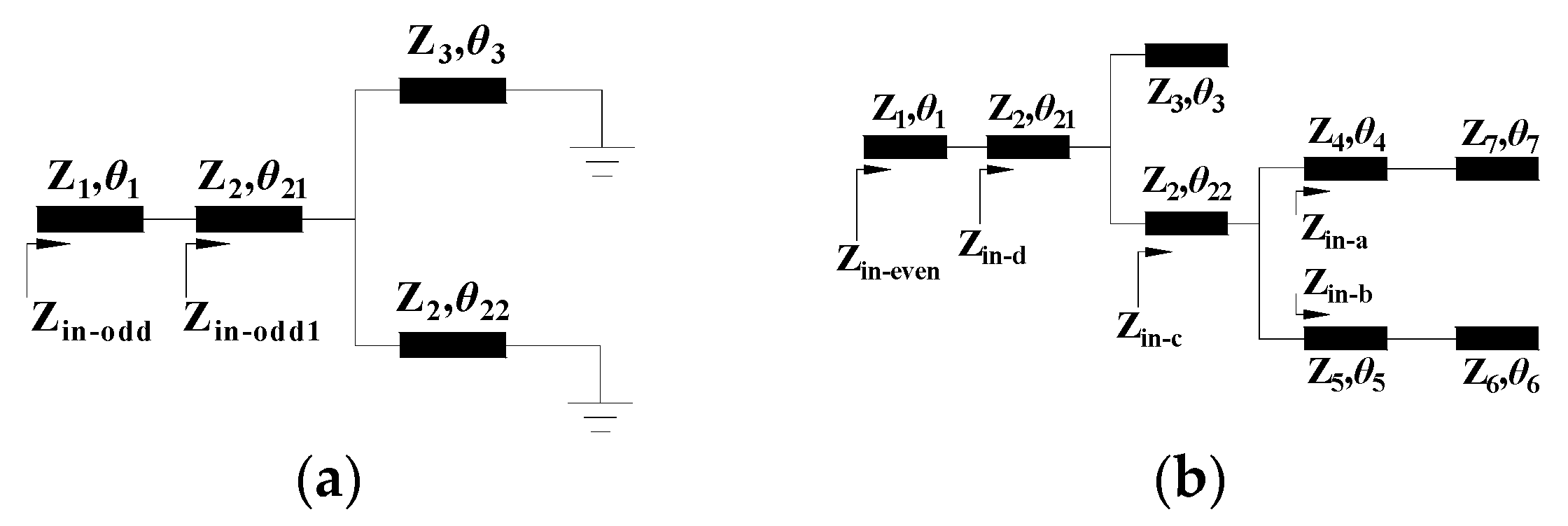
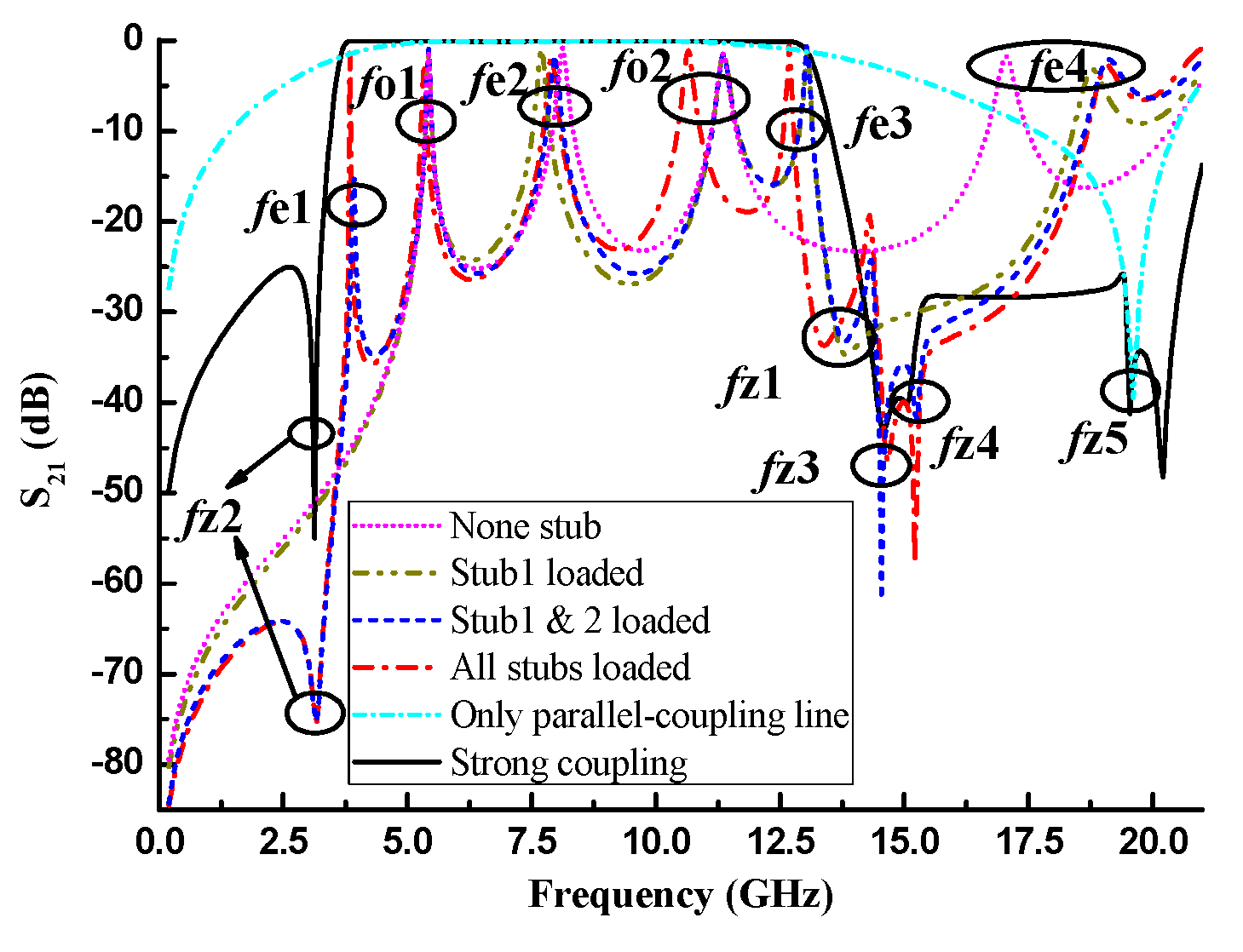
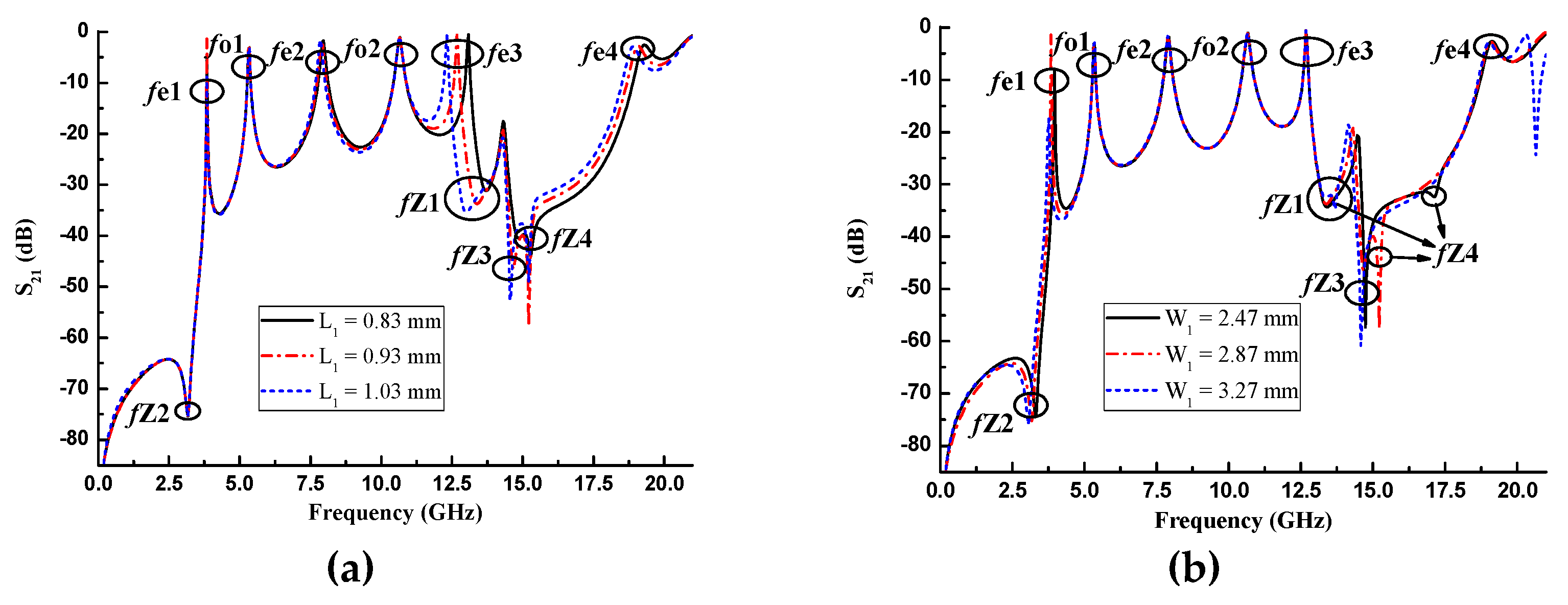
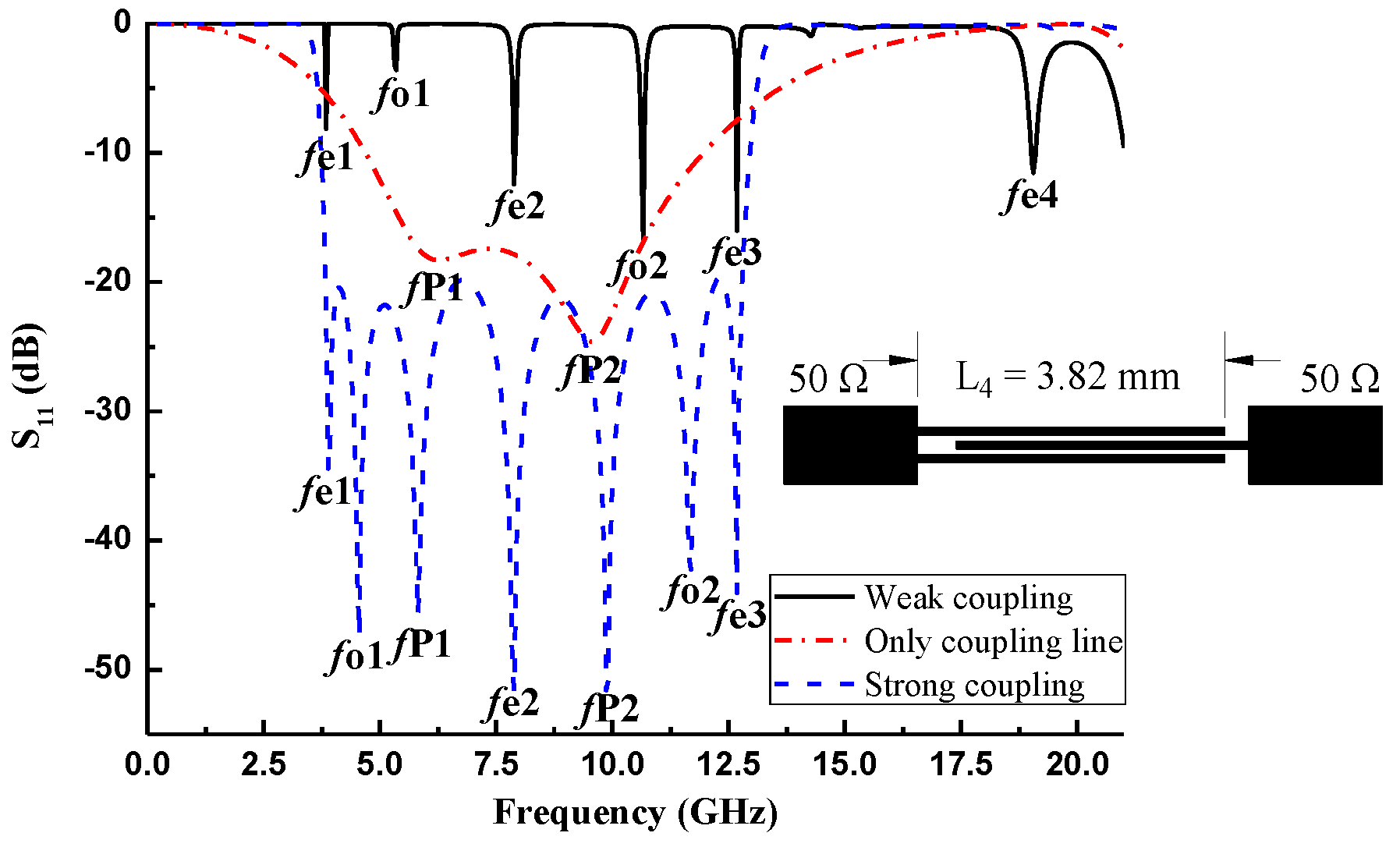
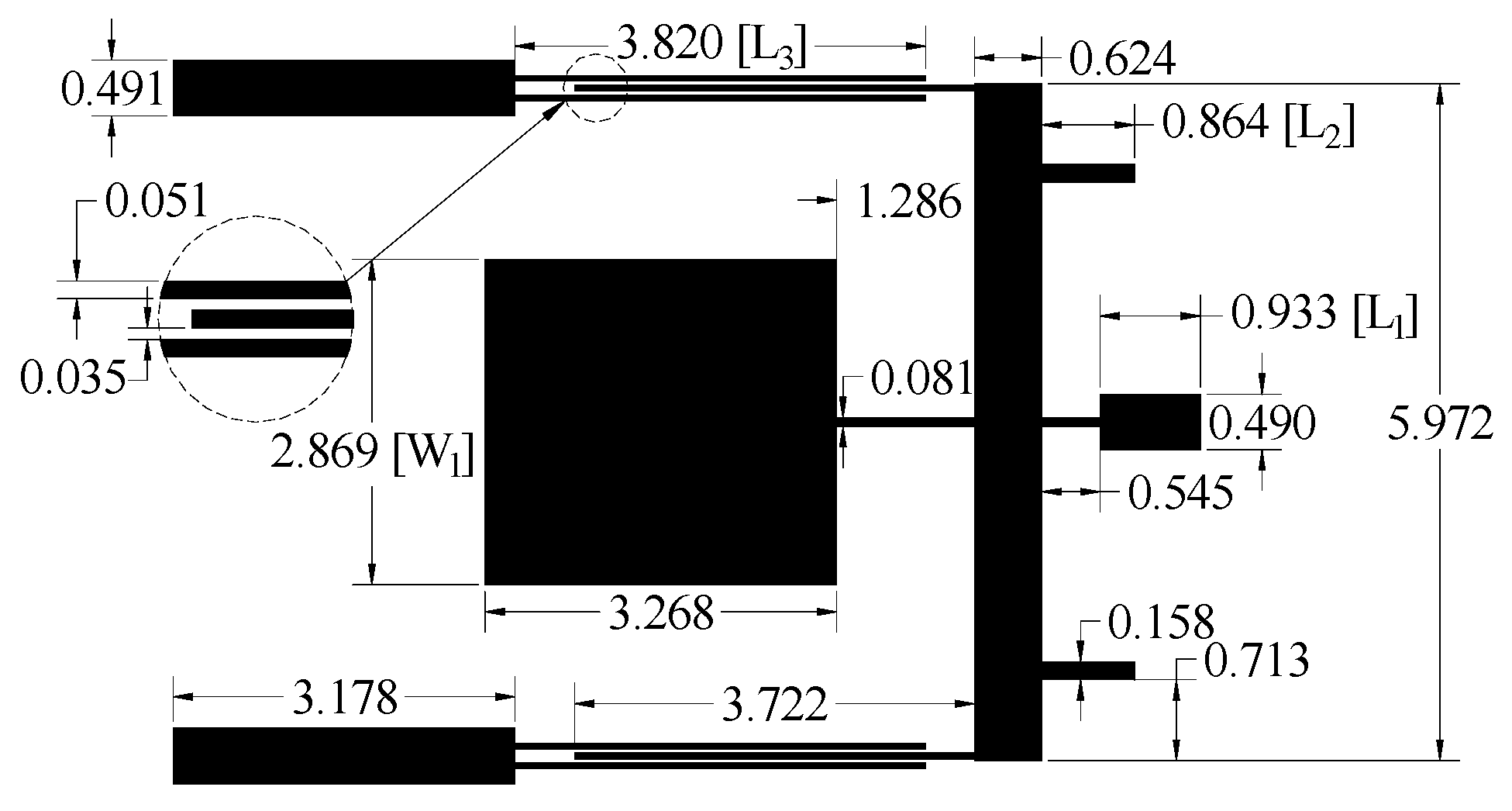
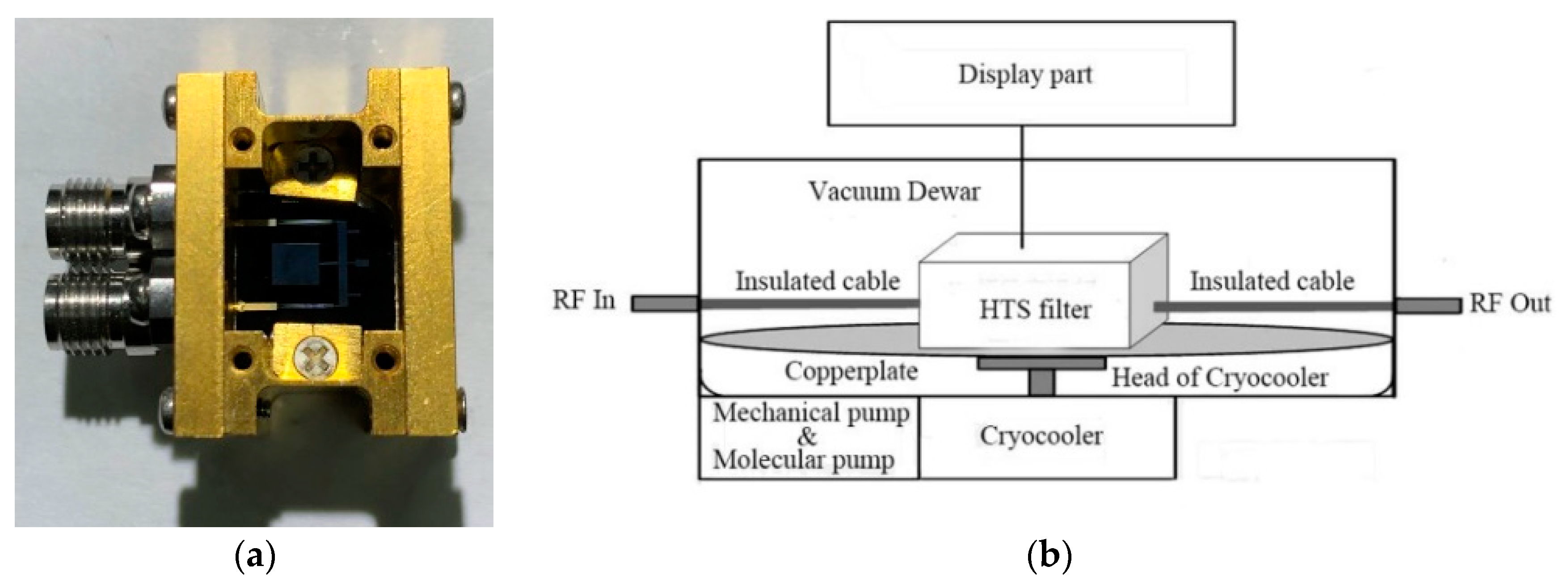
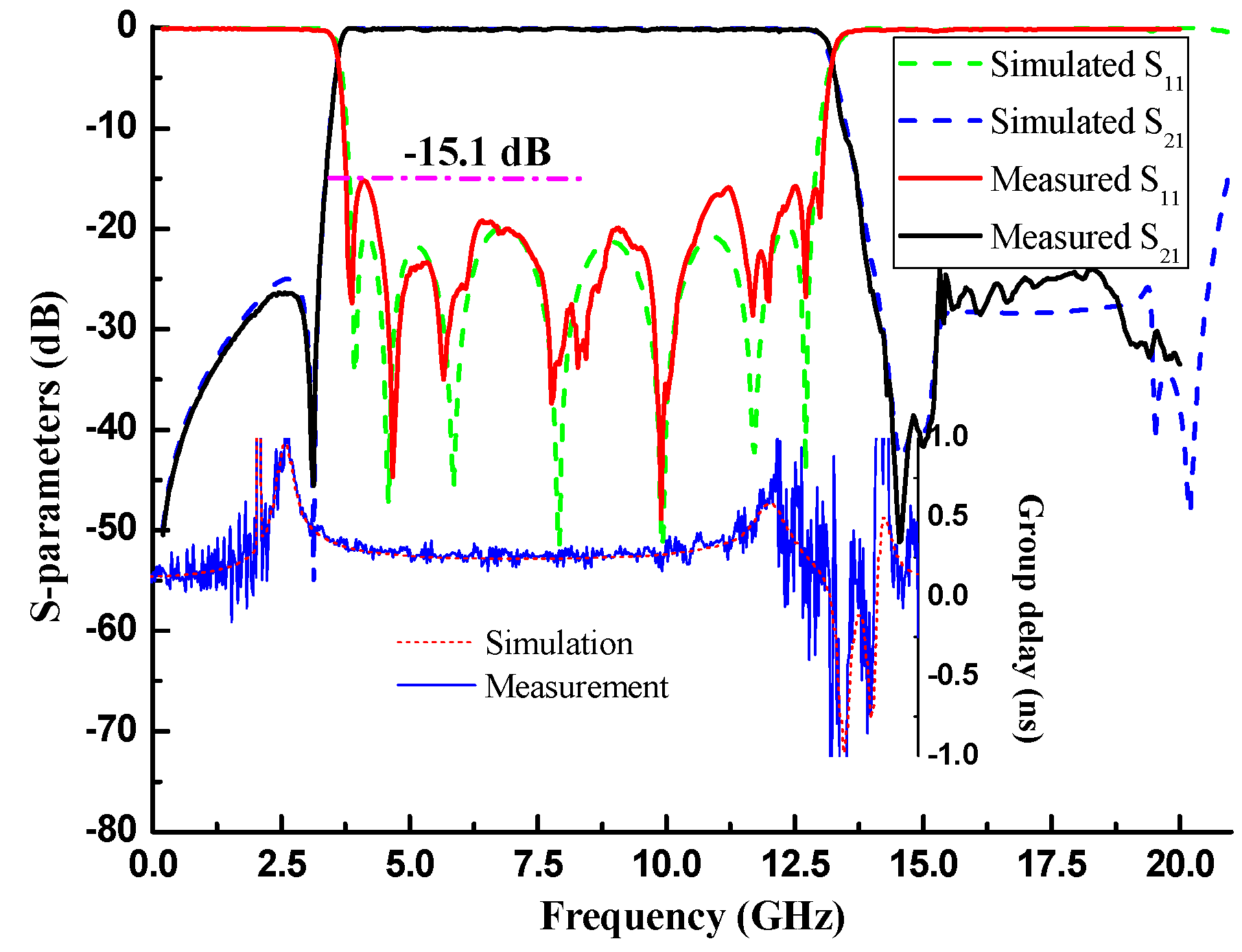
| Ref. | IL (dB) | RL (dB) | S.F. | 3-dB FBW (%) | Size (λg0 × λg0) | Complexity | Material |
|---|---|---|---|---|---|---|---|
| [2] | <1.00 | 10.5 | 0.722 | 123.0 | 0.17 × 0.14 | Complex | Copper |
| [5] | 0.4@f0 | 11.5 | N/A | 103.4 | 0.46 × 0.16 | Simple | Copper |
| [9] | <1.60 | 12.0 | 0.920 | 110.1 | 0.60 × 0.54 | Simple | Copper |
| [15] | <0.75 | 10.7 | 0.910 | 122.3 | 1.53 × 0.45 | Complex | HTS |
| [17] | <1.00 | 14.0 | 0.682 | 110.0 | N/A | Complex | Copper |
| [18] | <1.30 | 10.6 | 0.968 | 111.0 | 1.48 × 0.81 | Simple | HTS |
| [19] | <0.88 | 10.5 | N/A | 96.4 | 0.28 × 0.28 | Simple | HTS |
| This work | <0.32 | 15.1 | 0.872 | 114.3 | 0.24 × 0.16 | Simple | HTS |
© 2019 by the authors. Licensee MDPI, Basel, Switzerland. This article is an open access article distributed under the terms and conditions of the Creative Commons Attribution (CC BY) license (http://creativecommons.org/licenses/by/4.0/).
Share and Cite
Zhou, L.; Long, Z.; Wu, H.; Li, H.; Zhang, T. High-Performance Compact Multi-Mode UWB Filter using High-Temperature Superconductivity. Electronics 2019, 8, 1473. https://doi.org/10.3390/electronics8121473
Zhou L, Long Z, Wu H, Li H, Zhang T. High-Performance Compact Multi-Mode UWB Filter using High-Temperature Superconductivity. Electronics. 2019; 8(12):1473. https://doi.org/10.3390/electronics8121473
Chicago/Turabian StyleZhou, Liguo, Zhihe Long, Hang Wu, Hui Li, and Tianliang Zhang. 2019. "High-Performance Compact Multi-Mode UWB Filter using High-Temperature Superconductivity" Electronics 8, no. 12: 1473. https://doi.org/10.3390/electronics8121473
APA StyleZhou, L., Long, Z., Wu, H., Li, H., & Zhang, T. (2019). High-Performance Compact Multi-Mode UWB Filter using High-Temperature Superconductivity. Electronics, 8(12), 1473. https://doi.org/10.3390/electronics8121473





